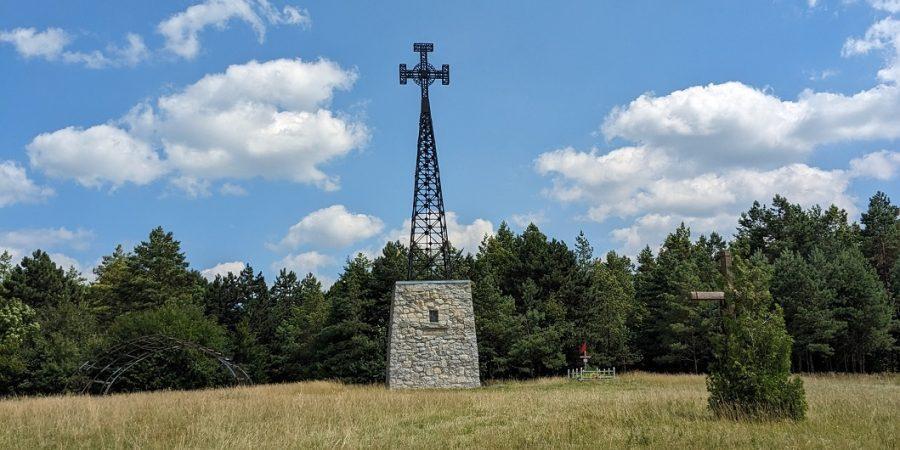On Bila Hora, in the village of Pidlyssia, Lviv region, stands a 25-meter-tall memorial cross dedicated to Markiyan Shashkevych, a renowned poet, writer, Greek Catholic priest, member of Ruska Triytsa (Ruthenian Triad), and co-author of the first Ukrainian-language almanac Rusalka Dnistrova. Shashkevych is often hailed as the “Builder (Budytel’) of the National Consciousness of Galicians” for his vital role in fostering and promoting Ukrainian national identity and culture among the people of western Ukraine. The cross was erected in 1911, commemorating the 100th anniversary of Shashkevych’s birth and honoring his invaluable contributions to Galician enlightenment and the Ukrainian literary revival.
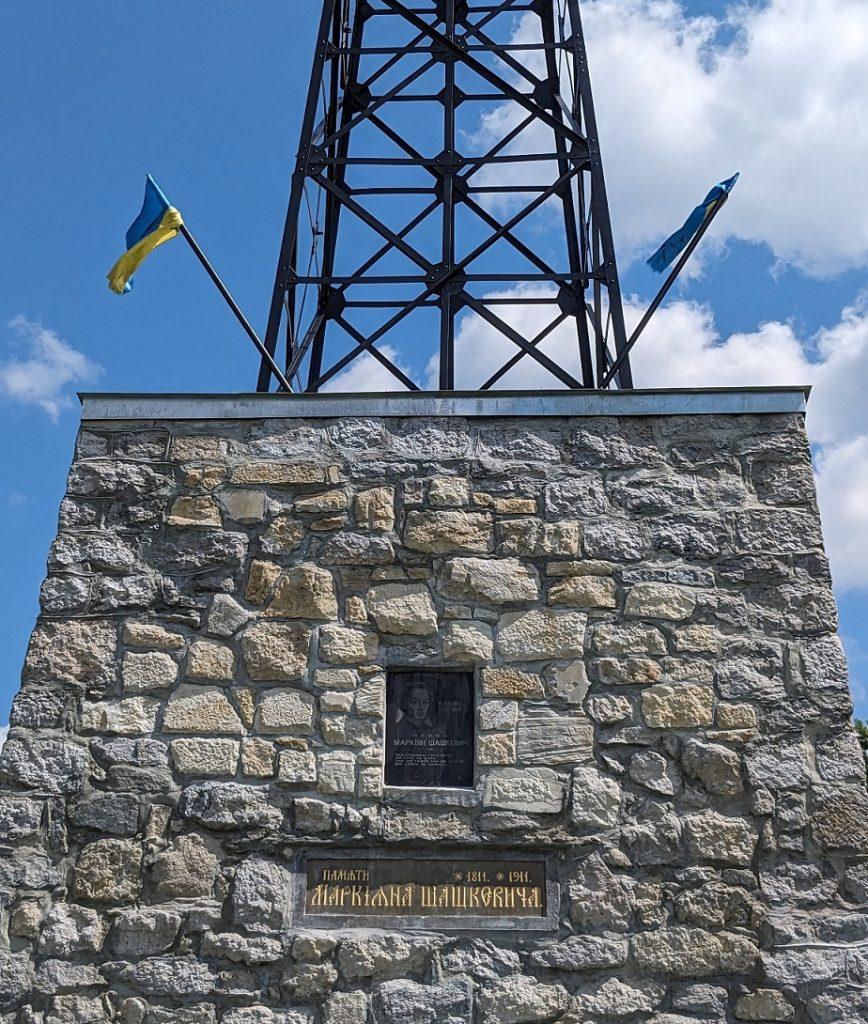
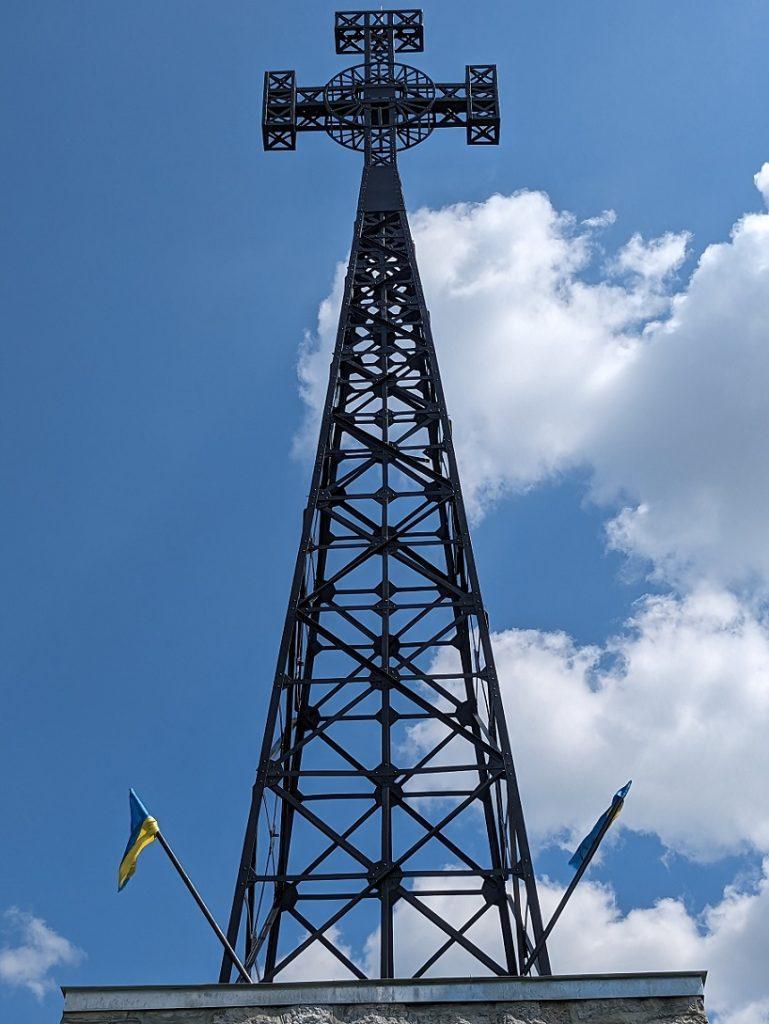
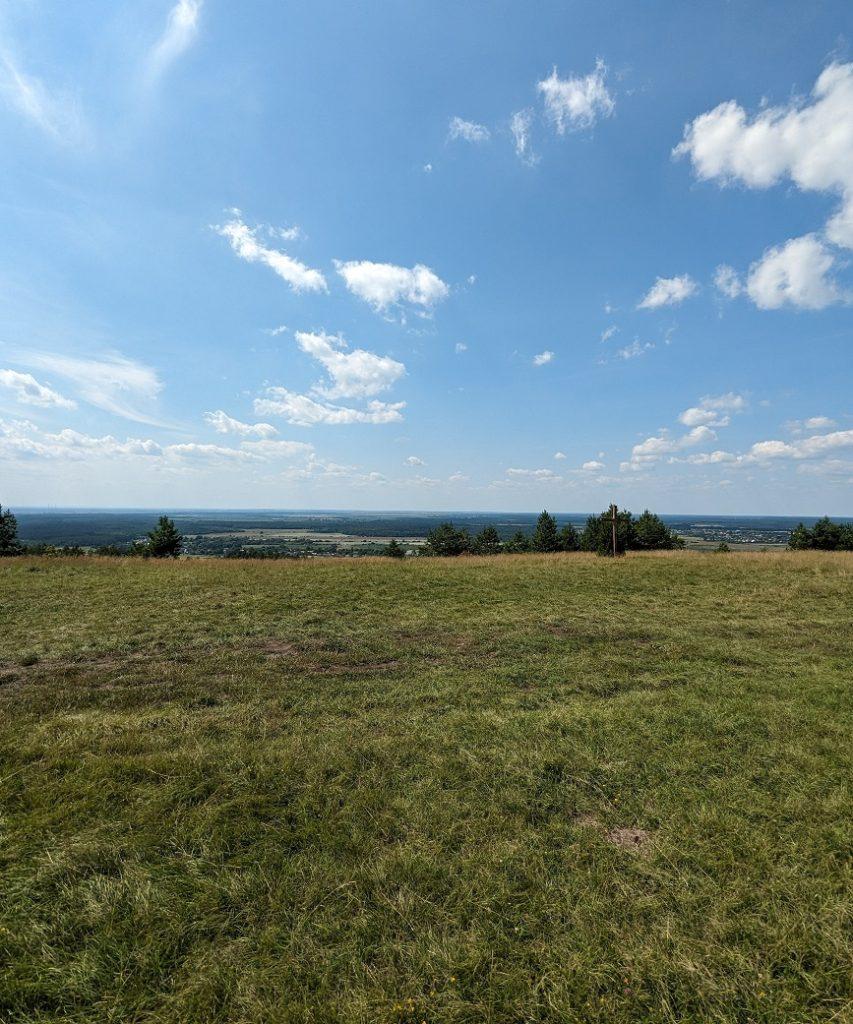
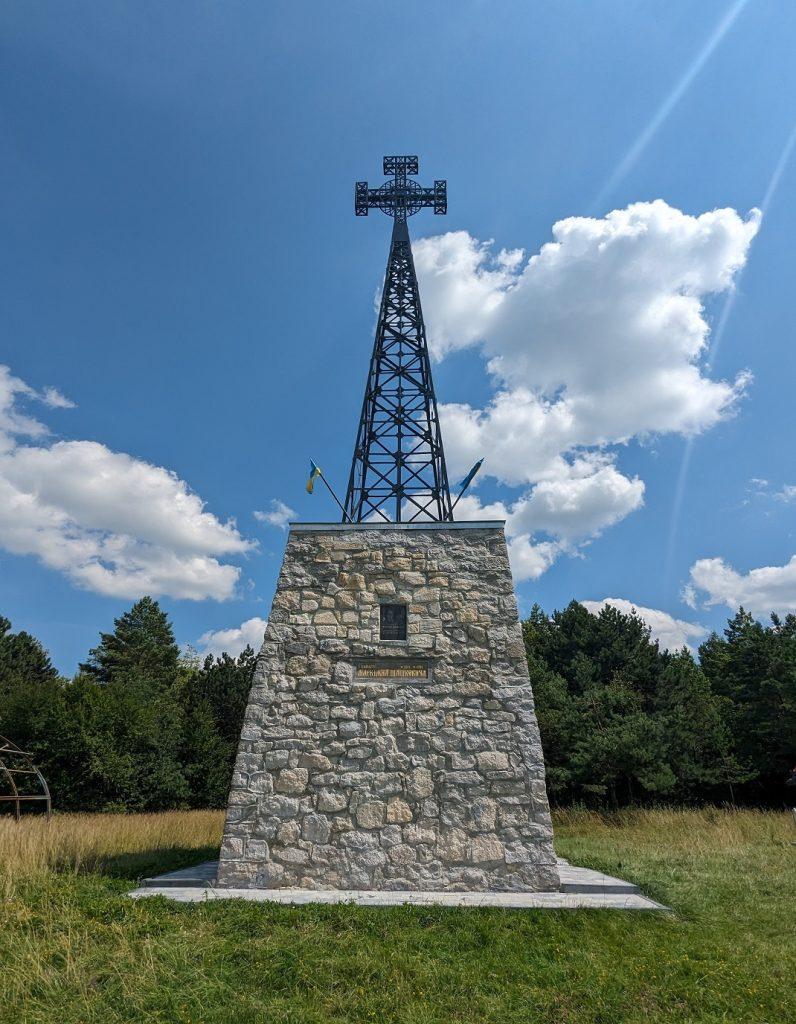
The monument was designed by Oleksandr Lushpynskyi, a renowned Lviv architect. It stands on a stone pedestal constructed from metal, symbolizing the weight of national and social oppression. At the top, an elegant tower reaches toward the sky, culminating with a cross that represents progress, science, and culture. The intricate cross was crafted by Mykhailo Stefanivskyi’s blacksmith workshop in Lviv, showcasing the exquisite craftsmanship of Ukrainian Art Nouveau.
Markiyan Shashkevych was deeply enamored with Bila Hora from his youth and wrote poems about it. Therefore, it was decided to honor his memory in this way by the Ukrainian community. To have free access to this memorial cross, the Markiyan Shashkevych Society bought the hill, which at that time belonged to the Polish lord Jabłoński. Initially, there were ambitious plans to develop the area further, including the construction of a grand church, a Prosvita reading room, and a Plast (scouting) campsite. However, the tumultuous events of the 20th century hindered the realization of these aspirations.
Although not all the plans materialized, this place became a significant gathering spot for Galicians to honor Shashkevych. Historical sources indicate that since the installation of the memorial cross, activists of the Ukrainian national revival have have organized large-scale festivities in honor of Markiyan Shashkevych.
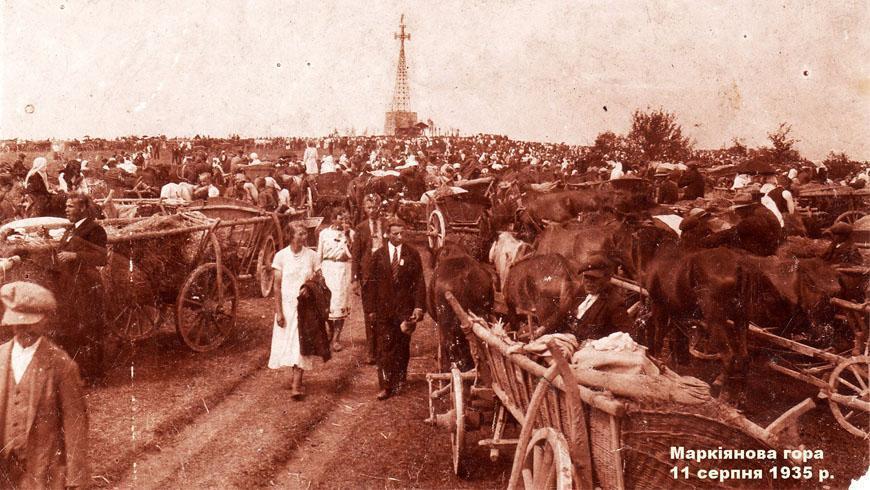
Even during the time of the German occupation, in 1941, solemn ceremonies were held here to honor Father Markiyan Shashkevych. These celebrations were perhaps the most massive, with around 40,000 people participating. Here are a couple of my family photos from when my great aunt attended the gathering in 1941:
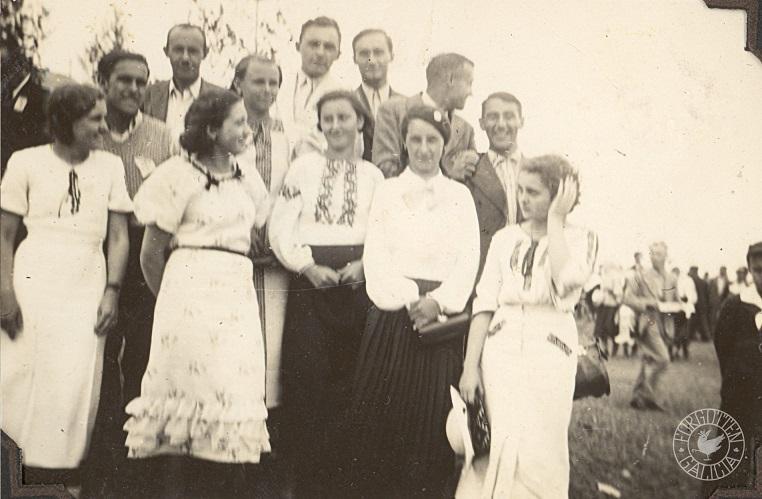

After the declaration of Ukraine’s independence, the tradition of honoring the “builder” on Bila Hora was revived. Since then, every August, celebrations take place on Bila Hora to honor Shashkevych. People come here to pay their respects to the Ukrainian symbol of Ukraine’s independence. The annual event includes a Divine Liturgy to remember the fallen soldiers of the Sich Riflemen and the Ukrainian Insurgent Army (UPA) in these lands.
In 2021, to commemorate the 210th birth anniversary of Markian Shashkevych, restoration work on the cross began. The diligent efforts culminated in early 2023, making it the first time the monument had undergone repairs since its construction in 1911. The revitalized memorial cross now stands proudly, a testament to the enduring legacy of this influential figure in Ukrainian history and literature.
***
In July 2023, I visited the hill myself for the first time to honor Markiyan Shahskevych’s memory, and to recreate this photo of my great aunt from the annual celebration 82 years ago, in 1941.

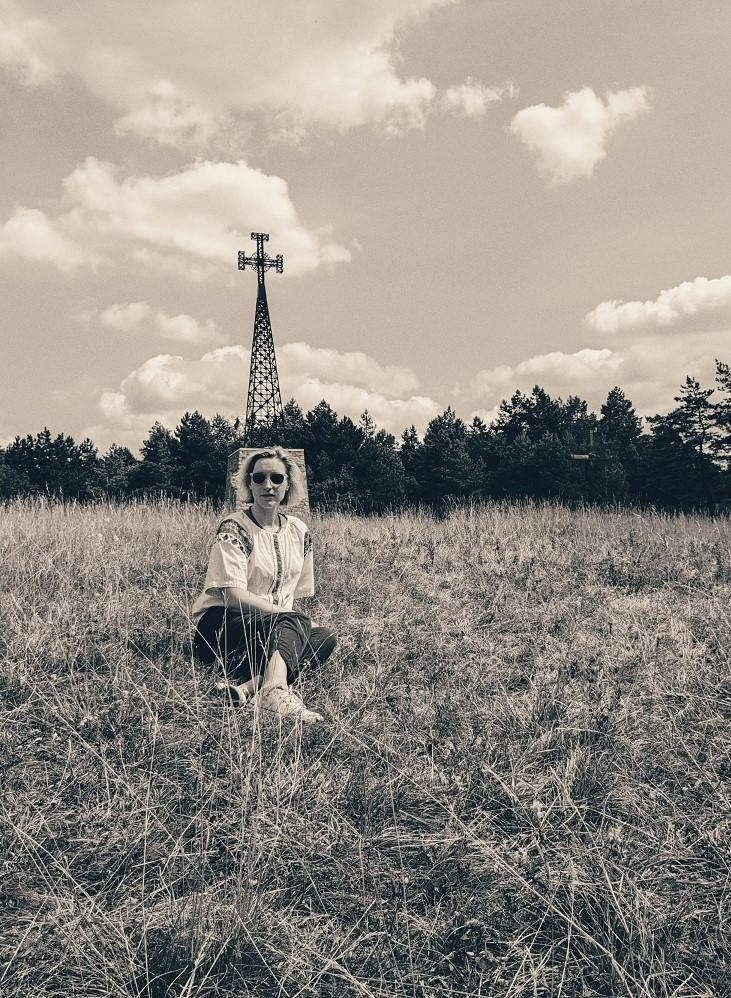
By Areta Kovalska

